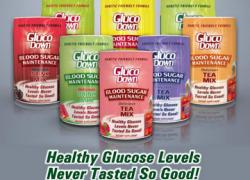Four Things Seniors Need to Know About Dental Coverage
By Dr. John Yamamoto, Dental Director of Clinical Innovations, Humana
There are far more benefits to healthy teeth and gums than a bright smile. In fact, your oral health greatly impacts your overall health, and that’s especially true for seniors.
Gum disease affects over two-thirds of adults aged 65 years and older, according to the Centers for Disease Control and Prevention, and bacteria and inflammation associated with poor gum health and tooth decay raises the risk of developing heart disease and pneumonia, as well as other serious health conditions. Additionally, losing teeth can lead to difficulty eating and nutritional deficiencies.
Despite the importance of good oral health, dental care often falls by the wayside. According to the Healthy Aging Poll, one in five older adults delayed getting dental care or went without it in the past two years, with cost and lack of dental coverage being major factors.
Although dental coverage is a highly desired supplement for seniors, Original Medicare does not cover routine dental care and procedures. However, many Medicare Advantage plans do. During this year’s Annual Election Period, which began Oct. 15 and runs through Dec. 7, people eligible for Medicare should consider the following when comparing dental benefits available on Medicare Advantage plans:
• Will the Plan Meet Your Dental Needs? Carefully review the dental services covered under the plan to ensure they cover the care and procedures you may need in the coming year based on the state of your oral health. If possible, get a dental check-up to learn what your dentist anticipates will be the level of care you’ll require.
• Is Your Dentist a Network Provider? Even if the plan allows you to receive care from any dentist, it may cost you less to use those within the plan’s network of providers. Check to see if your dentist is on the list of the plan’s network providers; if not, look to see if there are other dentists in your area who are in network.
• Are Visits Limited? Some plans limit the number of dental visits covered while others allow you to make as many visits as needed until you reach the maximum dollar amount your plan will pay. Not having limits on the frequency of visits will allow you more flexibility to get the services you need, when you need them.
• Can You Get Care Outside Your State? It’s especially important for those who travel often or are snowbirds spending part of the year in another state to make sure that their dental coverage will cross state lines. For example, Humana’s Medicare Advantage plans offer members in-network care inside and outside of their home state.
When choosing a Medicare plan, make dental coverage a high priority. Good dental care doesn’t just benefit your teeth, it can improve your health and quality of life.
Visit www.Medicare.gov or call 1-800-MEDICARE (TTY: 1-877-486-2048) 24 hours a day, seven days a week. You can learn about Humana Medicare Advantage plans by going to www.Humana.com/Medicare or calling 1-888-372-2614 (TTY: 711) from 8 a.m. to 8 p.m. local time, seven days a week, to speak with a licensed sales agent.
Humana is a Medicare Advantage HMO, HMO SNP, PPO, PPO SNP AND PFFS organization with a Medicare contract. Enrollment in any Humana plan depends on contract renewal.


 -
- 
 - By Alan Stewart, SVP, Medicare Divisional Leader, Humana - If you’re one of the nation’s 58.6 million people with Medicare, you understand the importance of selecting a health plan during the Medicare Advantage and Prescription Drug Plan Annual Election Period (AEP) -- running from Oct. 15 - Dec. 7 -since the plan you select is the plan you’ll likely have for all of the coming year.
- By Alan Stewart, SVP, Medicare Divisional Leader, Humana - If you’re one of the nation’s 58.6 million people with Medicare, you understand the importance of selecting a health plan during the Medicare Advantage and Prescription Drug Plan Annual Election Period (AEP) -- running from Oct. 15 - Dec. 7 -since the plan you select is the plan you’ll likely have for all of the coming year. 
 - Es divertido ver el regreso de algunas tendencias retro de los años 90, como las canciones clásicas del rock que vuelven a la lista de las favoritas, los peinados y hasta los zapatos de la época de los 90. Otras tendencias es mejor dejarlas en el pasado, como los millones de casos de varicela que ocurrían en los Estados Unidos cada año antes de que tuviéramos una vacuna eficaz.
- Es divertido ver el regreso de algunas tendencias retro de los años 90, como las canciones clásicas del rock que vuelven a la lista de las favoritas, los peinados y hasta los zapatos de la época de los 90. Otras tendencias es mejor dejarlas en el pasado, como los millones de casos de varicela que ocurrían en los Estados Unidos cada año antes de que tuviéramos una vacuna eficaz. 
 - Some 90’s retro trends are fun to see come around again, like classic songs returning to the playlist, hairstyles, and even fun 90s’ shoes. Other trends are better left in the past -- like the millions of cases of chickenpox that happened in the United States each year before we had an effective vaccine.
- Some 90’s retro trends are fun to see come around again, like classic songs returning to the playlist, hairstyles, and even fun 90s’ shoes. Other trends are better left in the past -- like the millions of cases of chickenpox that happened in the United States each year before we had an effective vaccine. 
 - The Medicare Advantage and Prescription Drug Plan Annual Election Period is underway, running from Oct. 15 through Dec. 7. Whether you are new to Medicare or are re-evaluating your options for a health care plan, navigating the abundance of choices can feel overwhelming. This is especially true for Veterans who also may be covered by other government-sponsored benefits, like those offered by Department of Veterans Affairs (VA), depending on their time in service and disability rating. With there being so many options to choose from, the biggest challenge is often knowing where to begin.
- The Medicare Advantage and Prescription Drug Plan Annual Election Period is underway, running from Oct. 15 through Dec. 7. Whether you are new to Medicare or are re-evaluating your options for a health care plan, navigating the abundance of choices can feel overwhelming. This is especially true for Veterans who also may be covered by other government-sponsored benefits, like those offered by Department of Veterans Affairs (VA), depending on their time in service and disability rating. With there being so many options to choose from, the biggest challenge is often knowing where to begin. 
 - For Julie Lycksell, a wife, a mother and retired operating room nurse from Long Island, NY, Feb. 6, 1998, is a date she will never forget. On that day, only two days after her actual birthday, Julie celebrates her “re-birthday” -- marking the day she nearly died from sudden cardiac arrest (SCA).
- For Julie Lycksell, a wife, a mother and retired operating room nurse from Long Island, NY, Feb. 6, 1998, is a date she will never forget. On that day, only two days after her actual birthday, Julie celebrates her “re-birthday” -- marking the day she nearly died from sudden cardiac arrest (SCA). 
 - While inflation is forcing many people to cut back on purchases, spending on your health is not where you want to trim your budget. However, if you have a prescription drug plan (PDP), now is a good time to take a closer look at how you can get the most out of your PDP, including ways to make your medications more affordable and accessible.
- While inflation is forcing many people to cut back on purchases, spending on your health is not where you want to trim your budget. However, if you have a prescription drug plan (PDP), now is a good time to take a closer look at how you can get the most out of your PDP, including ways to make your medications more affordable and accessible. 
 - As inflation causes us all to stretch our dollars, the majority of Americans are likely focused on finding the best prices without sacrificing quality. Healthcare is no exception, so picking the right insurance plan that meets your needs can be critical to maintaining a balanced budget.
- As inflation causes us all to stretch our dollars, the majority of Americans are likely focused on finding the best prices without sacrificing quality. Healthcare is no exception, so picking the right insurance plan that meets your needs can be critical to maintaining a balanced budget. 
 - Did you know that one in seven Americans lives with a kidney disease? As a nephrologist, I see the range of emotions patients experience when they are first diagnosed. Anxiety, fear and guilt are all common feelings that may be accompanied by physical aches and pains stemming from their condition. While these emotions may be overwhelming, I encourage my patients to take charge of their diagnosis by educating and empowering themselves to learn more about a management strategy that works for them.
- Did you know that one in seven Americans lives with a kidney disease? As a nephrologist, I see the range of emotions patients experience when they are first diagnosed. Anxiety, fear and guilt are all common feelings that may be accompanied by physical aches and pains stemming from their condition. While these emotions may be overwhelming, I encourage my patients to take charge of their diagnosis by educating and empowering themselves to learn more about a management strategy that works for them. 
 - Joe Minogue knows the meaning of service. The retired lieutenant from the New York City Fire Department (FDNY) began his firefighting career in 1998. But on September 11, 2001, his chosen career changed radically when the World Trade Center Twin Towers collapsed following a devastating terrorist attack.
- Joe Minogue knows the meaning of service. The retired lieutenant from the New York City Fire Department (FDNY) began his firefighting career in 1998. But on September 11, 2001, his chosen career changed radically when the World Trade Center Twin Towers collapsed following a devastating terrorist attack. 